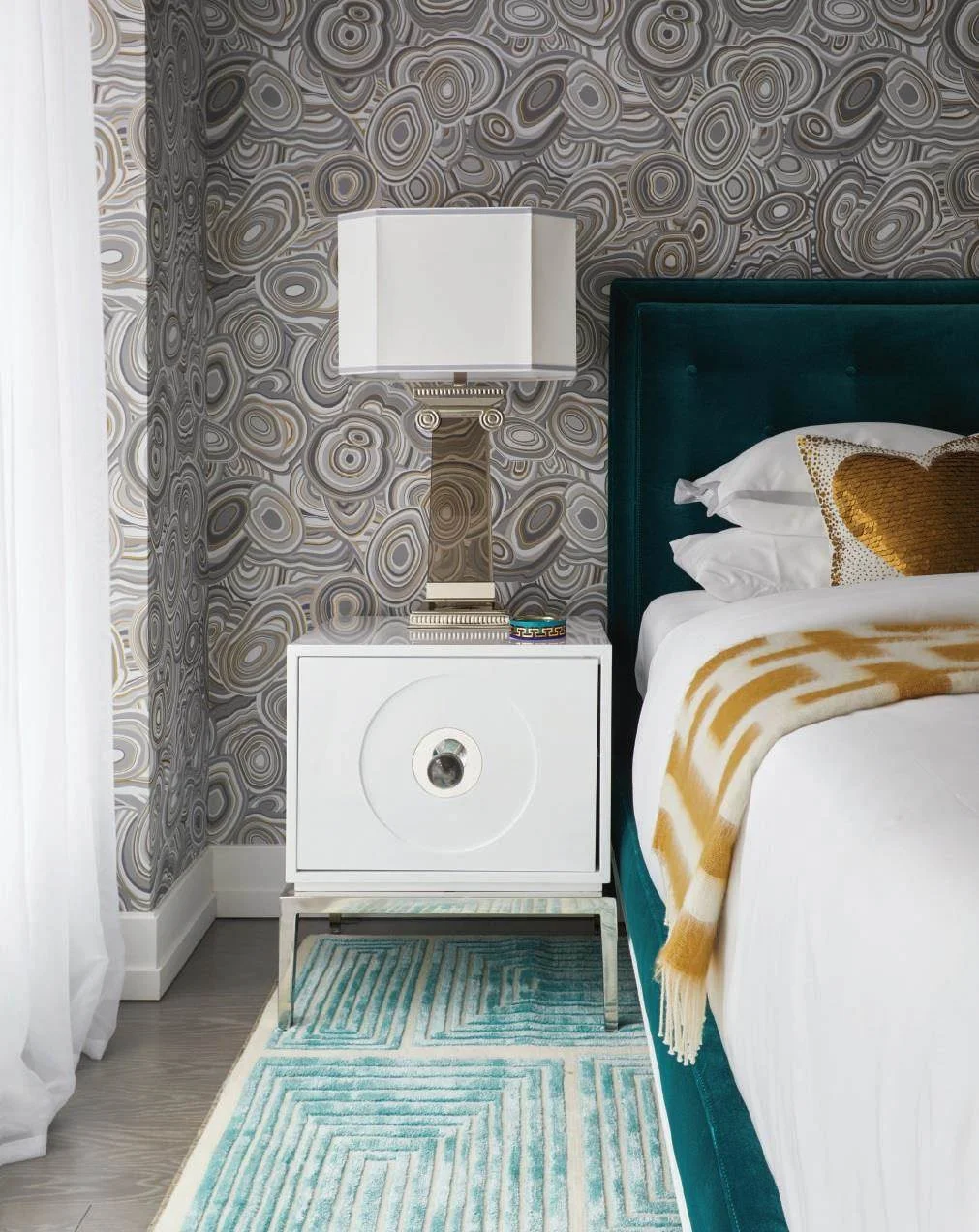The Wonders of Wallpaper | Design Options Span from Basic to Bold and Neutral to Colourful
In the design world, wallpaper is the great change artist. It has the power to transform the look and feel of a room in a blink—adding glamour, creating whimsy, lending refinement. Few decor modifications are as instantaneous or as drastic.
“Wallpaper can take a boring, cookie-cutter white box and make it sparkle with color and pattern,” says Jonathan Adler, the famed designer, author and potter. “By adding something textured, like grass cloth, it can make a room feel architecturally more interesting.”
Wallpaper designs are as intricate as they are basic, as colorful as they are neutral, and as bold as they are minimalist. There are motifs and styles that appeal to every whim and design sensibility.
Today’s iterations of papers aren’t, in fact, limited to paper. From a practical standpoint, there are vinyl varieties prized for durability in high-traffic zones.
Glamorous metallics, which can be stamped, printed or even layered with motifs, create reflective depth in a room. Flocked wallpaper features a velvetlike texture and can be found in ornate damask patterns, geometric prints and florals for added drama.
Textural types include grass cloth, which is made from woven grass and has an organic vibe, and beadboard, which has the look and feel of wood. (Martha Stewart's beadboard iteration mimics the effect of wainscoting.) Then there are faux snakeskin, leather and crocodile skins. And for the ultimate luxury, there are hand-painted chinoiserie and sumptuous silk-dyed walls from couture companies like de Gournay.
Whether you’re dressing the small confines of a powder room or the expanses of a great room, options are infinite, and knowing what to choose can often be a daunting task. To help whittle the wallpaper world, we asked Adler for his top tips on bringing your walls to life.
BREAK THE RULES
“People are scared of wallpaper, but the truth is there are no rules—you can add a modern wallpaper to a traditional home or add traditional wallpaper to a modern home, and either way you’ll have something you love. Embrace what you’ve got. Paper a dark room in a dark wallpaper to play up the space’s intimacy. And a small room can handle a bold pattern—it adds drama.”
FULLY COMMIT
“Ditch the accent wall—when wallpapering, it’s best to fully commit. Go big or go home. A varsity move is to paper the ceiling. A wallpapered ceiling turns a small space into a jewel box.”
MIX AND MATCH CAREFULLY
“When it comes to mixing patterns, let one of them be the star. If you’re going for a bold, large-scale pattern on the walls, the rest of the patterns in the space should be smaller in scale.”
THINK ABOUT ADJACENT SPACES
“Like with music, transitions are key. You want each space to flow into another without too much of a jarring mix. If a space leads directly into another, use complementary colors.”
CONSIDER THE PRINTING PROCESS
“The trend nowadays is for digitally printed paper, but I much prefer the oldfashioned way: screen-printed. When shopping for wallpaper, look for one that is screen-printed (like all of ours!) rather than digitally printed—it’s much more labor-intensive, but it’s worth it. The color is more saturated and the pattern is crisper. When it comes to wallpaper, you get what you pay for.”

